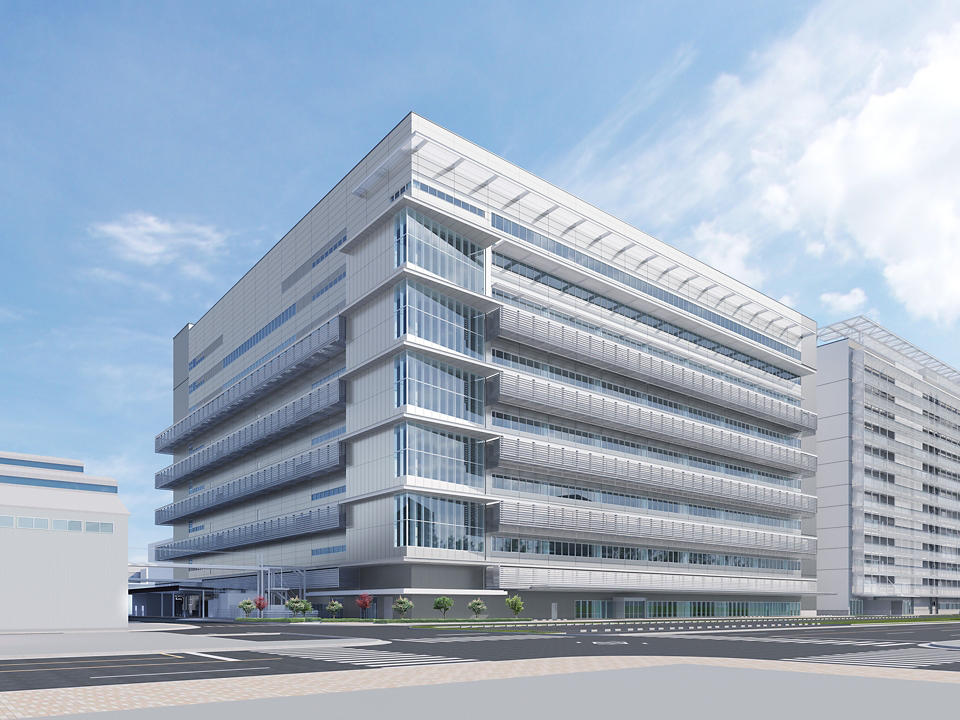LANGUAGES

- New building at Honsha Plant in Japan will house fuel cell stack production
- Japan’s Shimoyama Plant to add new line dedicated to mass production of high-pressure hydrogen tanks
- Expansion of sales areas for fuel cell electric vehicles planned in Japan and overseas
Toyota City, Japan, May 24, 2018 ― Toyota sees global sales of fuel cell electric vehicles (FCEV) increasing significantly after 2020, to at least 30,000 per year from today’s 3,000. To prepare for this growth, the company unveiled plans for two major new facilities today:
- A brand-new building near its original automobile factory for expanding fuel cell stack (FC stack) mass production at Toyota’s Honsha Plant in Japan; and
- A new line in an existing plant to manufacture high-pressure hydrogen tanks at Toyota’s Shimoyama Plant in Japan.
The fuel cell stack is what generates the on-board electricity from a chemical reaction between hydrogen and oxygen, which propels FCEVs and produces zero emissions. The tanks store the hydrogen fuel. Manufacturing both components at scale is critical to achieving lower system costs and wider availability for further growth and sales of FCEVs.
Expansion of production facilities
To increase fuel cell stack output, Toyota will move production to a brand-new, eight-floor high-tech facility on the same premises as its current location in an existing building at its Honsha Plant in Toyota City, near the original site of the company’s very first automobile factory in 1938.
The production of high-pressure hydrogen tanks will be handled by a new, dedicated line to be added inside the nearby Shimoyama Plant (No. 3) in Miyoshi City (Aichi Prefecture). The hydrogen tanks were previously assembled at the Honsha plant on a smaller scale. Toyota’s hydrogen tanks are made of extra-thick carbon fiber and are built to withstand major impacts.
Outline of the production facilities
|
|
FC Stack Production |
High-Pressure Hydrogen Tank Line |
|
Location |
New facility on Honsha plant premises |
Inside Plant No. 3, Shimoyama Plant |
|
Items Produced |
Fuel cell stack |
High-pressure hydrogen tank |
|
Area |
Approx. 70,000 m2 (total floor area spread over 8 floors) |
Approx. 15,000 m2 |
Expanding FCEV sales to more countries and regions
Construction of the new hydrogen tank line at Shimoyama is starting now. The exterior for the new fuel cell stack production facility is already finished and work will now begin on the interior. Details of the respective facilities will be announced at a later date with an aim to start operations around 2020.The new facilities are expected to help significantly reduce CO2 emissions during the production stage. This is one of the goals for the Plant Zero CO2 Emissions Challenge in the Toyota Environmental Challenge 2050 announced in October 2015.
As a technology, fuel cells are mature and ready to be scaled up. Toyota took the lead in bringing the first mass-produced fuel cell sedan, the Mirai, to market in December 2014. Annual production and sales have steadily increased, going from about 700 units in 2015, to around 2,000 units in 2016, and approximately 3,000 units in 2017. However, in order to encourage more widespread use of hydrogen-powered zero-emission vehicles, popularization needs to start by the 2020s. Toyota aims for annual sales of FCEVs to top 30,000 units globally by that time.\
At present, Mirai is sold in 11 countries: Japan, the United States, and nine countries in Europe. Its imminent arrival in Canada was also announced in January 2018. Toyota continues to help develop a market that will allow FCEVs to be sold in more countries and regions in the future. As part of this, demonstration tests of Mirai are currently under way in Australia, Canada, China, and the U.A.E., and Toyota is studying the demand for FCEVs while continuing to help with initiatives to promote hydrogen infrastructure development.\
In the Japanese market, Toyota aims to reach sales of at least 1,000 FCEV units per month and over 10,000 units annually, beginning around 2020. Sales regions within Japan will be further expanded from the current four major metropolitan areas to allow even more customers to enjoy the Mirai.
On the commercial side, Toyota started sales of fuel cell buses to the Tokyo Metropolitan Government in February 2017, and introduced the final version, the Sora, in 2018 with three additional units. Toyota aims to sell at least 100 such buses ahead of the Olympic and Paralympic Games Tokyo 2020.
Toyota will continue to expand its FCEV product range and strengthen product appeal, aiming to bring overall costs down. Also, Toyota will keep working with the Toyota Group and other companies to develop a hydrogen supply infrastructure and construct a low-carbon hydrogen supply chain. Through such initiatives, the company is actively contributing to the realization of a hydrogen-based society.
###
Every effort has been made to ensure the product specifications, equipment, and content on this site are accurate based on information available at time of publishing. In some cases, certain changes in standard equipment or options may occur, which may not be reflected online. Toyota Canada reserves the rights to make these changes without notice or obligation.